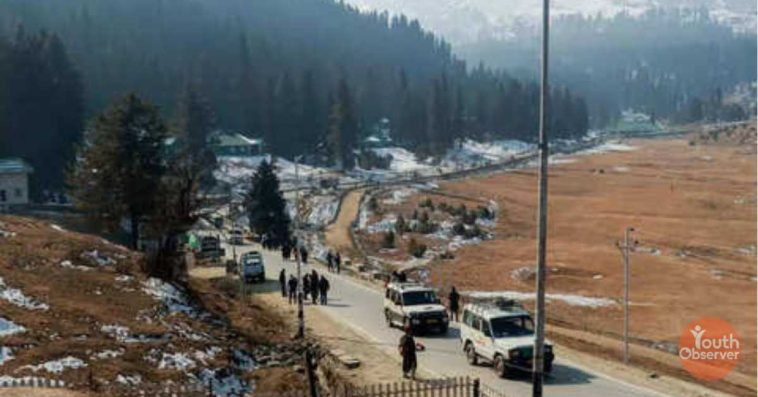The western Himalayas are facing a severe water shortage crisis after experiencing an 80% rainfall deficit in December and almost no rain or snow in January so far. The India Meteorological Department (IMD) blames this unusual dryness on the lack of active western disturbances, the weather systems that typically bring winter precipitation to the region.
These western disturbances originate in the Mediterranean and usually provide crucial water for agriculture, horticulture, and maintaining river flows. Their absence has also led to a persistent thick fog layer hovering over the plains since December 25th, further adding to the gloomy picture.
Sonam Lotus, head of the meteorological center in Leh, Ladakh, expressed concerns about the long-term impact of this dry spell. “The precipitation deficit will likely impact freshwater availability in the Himalayan region, potentially affecting horticulture and agricultural production in the months to come,” she said.
While many shiver through peak winter, an unusual warmth blankets Kashmir and Ladakh. Crops are blooming prematurely, sparking concern among experts. This warm anomaly, coupled with a worrying lack of snowfall, poses serious threats to the region’s water security.
Dr. Raihana Habib Kanth, Agriculture Dean at Sher-e-Kashmir University, explains, “Snowfall during the Chillai Kalan period is crucial for replenishing freshwater reserves before the monsoon arrives. The prolonged dry spell has already diminished river and stream levels.”
Data confirms this bleak picture. An IMD report by scientists Krishna Mishra, Naresh Kumar, and Mausam Jenaamani reveals abnormally warm maximum temperatures, 5-8 degrees Celsius above average, across the northern plains since December 29. While a brief respite from a western disturbance occurred on January 7-8, temperatures have plunged again, with many stations recording lows below 4 degrees Celsius in the past week.
Adding to the woes, a dense fog layer has persistently shrouded the northwest plains since December 25. Its peak intensity, on January 14, reduced visibility to zero across a vast stretch from Amritsar to Dibrugarh, encompassing Delhi, Uttar Pradesh, and Bihar.
Behind this extreme weather lies a culprit: the dearth of active western disturbances. These crucial weather systems, typically bringing snow and rain, rarely visited northwest India this December and January. “Usually, at least 5-7 western disturbances impact the region during these months,” explain the IMD scientists. “This winter, we haven’t seen a single strong one.”
This warm winter brings anxieties about water availability for agriculture and human consumption in the months to come. The early blooms, a deceptive harbinger of spring, paint a picture of potential agricultural setbacks due to water scarcity.
Why Kashmir and Ladakh Shiver as India Stays Warm?
While unusual warmth bathes most of India this winter, Kashmir and Ladakh face a chilling reality: a dramatic lack of snow and plummeting water reserves. This concerning anomaly, caused by a trifecta of factors, threatens the region’s future water security.
The culprit? Absent “western disturbances,” crucial weather systems that typically bring winter snow and rain. “Only two weak disturbances touched India this season, barely grazing Gujarat, Maharashtra, Rajasthan, and Madhya Pradesh,” explain IMD scientists. This has resulted in an 80% precipitation deficit in the west Himalayas during December and almost no snowfall in January so far.
Beyond the missing disturbances, three other factors compound the problem:
- El Niño: Warming Pacific Ocean waters disrupt weather patterns, further reducing the likelihood of western disturbances reaching northwest India.
- Strong jet stream: These high-altitude winds prevent cold air from descending, pushing temperatures higher and hindering fog formation.
- Weak winds: Calm conditions allow moisture to settle near the ground, creating dense fog that traps heat and further amplifies the warm spell.
The consequences are stark. Fog has blanketed the plains since December, while Ladakh and Kashmir grapple with early blooms – a deceptive sign amidst dwindling water reserves. Experts warn of potential agricultural setbacks and water scarcity in the coming months.

